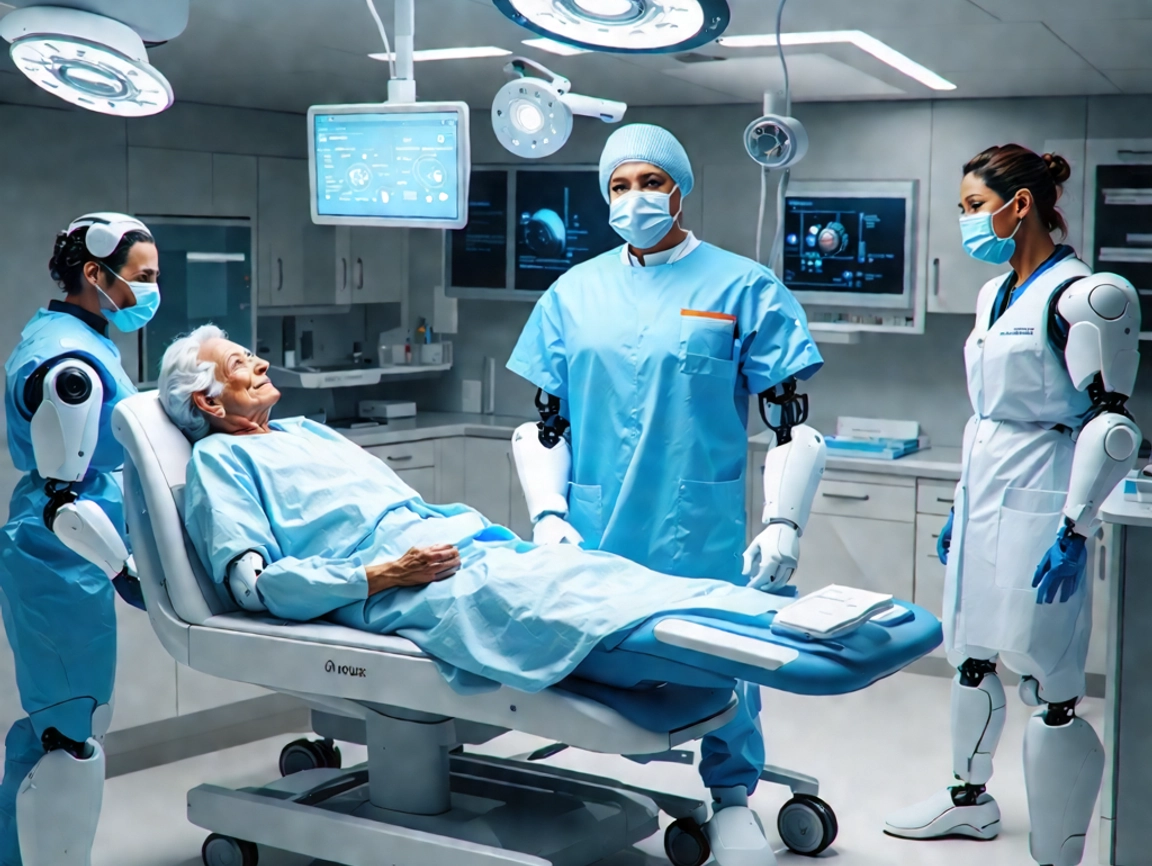The integration of robotics into healthcare is no longer a futuristic dream—it’s a reality that’s transforming the industry. From assisting in complex surgeries to providing support for elderly care, robots are revolutionizing how medical services are delivered. This article delves into the growing role of robotics in healthcare, its benefits, challenges, and future potential, while adhering to SEO best practices and ensuring originality.
How Robotics is Transforming Healthcare
Robotics is making waves across various medical fields, enhancing precision, efficiency, and patient outcomes. Here are some key areas where robotics is having a significant impact:
- Surgical Assistance
Robotic surgical systems, such as the da Vinci Surgical System, have become game-changers in the operating room. These systems allow surgeons to perform minimally invasive procedures with unparalleled precision. Equipped with 3D visualization and advanced instruments, robotic systems reduce the risk of complications, minimize scarring, and accelerate recovery times.
- Rehabilitation and Physical Therapy
Robots are playing a crucial role in helping patients recover from injuries, strokes, or surgeries. Robotic exoskeletons, for instance, assist individuals with mobility issues by providing guided movements and support. These devices not only improve physical strength but also enhance the overall quality of life for patients.
- Elderly and Disability Care
With the global population aging rapidly, robots are stepping in to provide much-needed assistance. From helping with daily tasks like bathing and dressing to monitoring vital signs, robots are becoming invaluable companions for the elderly and individuals with disabilities. They also offer reminders for medication, ensuring patients adhere to their treatment plans.
- Diagnostics and Laboratory Work
In laboratories, robots are automating repetitive tasks such as sample analysis, medication preparation, and even drug discovery. By handling these tasks with precision and speed, robots free up healthcare professionals to focus on more complex responsibilities, ultimately improving efficiency and accuracy.
- Disinfection and Sanitization
The COVID-19 pandemic highlighted the importance of maintaining sterile environments in healthcare settings. Robots equipped with UV light or disinfectant sprays are now being used to sanitize hospitals, reducing the risk of infections for both patients and healthcare workers.
Benefits of Robotics in Healthcare
The adoption of robotics in healthcare offers numerous advantages:
- Improved Precision: Robots can perform intricate tasks with high accuracy, reducing the likelihood of human error.
- Enhanced Efficiency: By automating repetitive tasks, robots allow healthcare professionals to dedicate more time to patient care.
- Faster Recovery Times: Minimally invasive robotic surgeries often result in shorter hospital stays and quicker recoveries.
- 24/7 Availability: Robots can operate around the clock, providing consistent care and support without fatigue.
- Cost Savings: While the initial investment in robotics can be high, the long-term benefits—such as reduced complications and shorter hospital stays—can lead to significant cost savings.
Challenges and Ethical Considerations
Despite its potential, the integration of robotics in healthcare is not without challenges:
- High Costs: The development and implementation of robotic systems can be prohibitively expensive, particularly for smaller healthcare facilities.
- Training Requirements: Healthcare professionals need specialized training to operate robotic systems effectively, which can be time-consuming and costly.
- Ethical Concerns: The use of robots in patient care raises questions about privacy, data security, and the potential loss of the human touch in medicine.
- Job Displacement: There are concerns that robots could replace certain healthcare jobs, though many experts argue that they will complement rather than replace human workers.
The Future of Robotics in Healthcare
The future of robotics in healthcare is incredibly promising. Advances in artificial intelligence (AI), machine learning, and materials science are driving the development of smarter, more versatile robots. Here are some potential future applications:
- Nanobots for Targeted Drug Delivery: Tiny robots could deliver medications directly to affected cells, minimizing side effects and improving treatment efficacy.
- AI-Powered Diagnostics: Robots equipped with AI could analyze vast amounts of medical data, providing real-time diagnostic recommendations and personalized treatment plans.
- Remote Surgery: Surgeons could perform procedures on patients located in different parts of the world using robotic systems, bridging the gap in access to specialized care.
- Mental Health Support: Robots could be used to provide companionship and emotional support for individuals struggling with mental health issues, offering a new dimension to patient care.
Conclusion
Robotics is revolutionizing healthcare by enhancing precision, efficiency, and patient care. While challenges such as high costs and ethical concerns remain, the potential benefits far outweigh the drawbacks. As technology continues to evolve, robots will play an increasingly vital role in shaping the future of medicine. By embracing these innovations, the healthcare industry can provide better outcomes for patients and professionals alike.
Final Thoughts
The integration of robotics into healthcare is not just a trend—it’s a necessity. As the demand for medical services grows, robots offer a scalable solution to meet these needs. By combining the strengths of human expertise with robotic precision, the healthcare industry can achieve new heights in patient care and operational efficiency.
